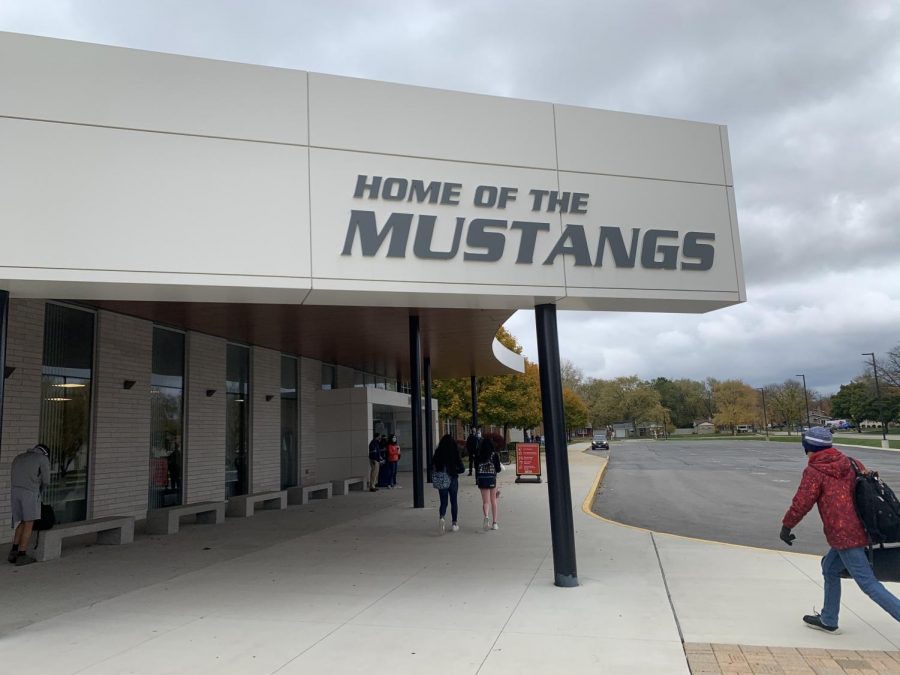Return to hybrid learning draws mixed reviews
The week of Jan. 5 marks the first week students have been in the building since Oct. 30.
On Jan. 5, DGS students and staff returned to in-person instruction as part of the new 2021 hybrid schedule. In-person class time has been significantly increased under this new schedule; hybrid students will go to each of their classes in-person once per week rather than once every three weeks under the previous iterations of hybrid learning.
Along with this new schedule, new metrics have been adopted to guide the district’s decision of whether to follow the hybrid or remote schedule. For hybrid learning to take place, the positivity rate must be below 9% or cases per 100,000 must be below 125 in District 99 zip codes.
What remains constant from the previous iteration of hybrid learning is the format of classes. Students will continue to go to synchronous Zoom classes when they are not in the classroom while teachers will simultaneously teach both in-person and remote learners. This balancing act of teaching two separate groups is something that English teacher Dr. Kierstin Thompson spoke on.
“I think that hybrid teaching — and for me that means simultaneously trying to teach students online and in-person — is exhausting… I love being with students, but I feel like taffy being pulled in too many directions when I am teaching in hybrid. I have to navigate the kids on Zoom, the kids in the room, additional technology, a mask, a shield — it’s a lot to coordinate,” Thompson said.
Many have pointed to in-person instruction as a way to solve Zoom fatigue and the general isolation both students and teachers have felt during the COVID-19 pandemic; however, Thompson is unsure if hybrid learning offers this.
“There are the planning and instruction challenges that have to do with having all interactions entirely digital, but there are the additional challenges of isolation and distraction and lack of motivation. I think those are challenges for teachers and students. I honestly don’t know if those challenges can be overcome or resolved by in-person teaching during a pandemic,” Thompson said.
Meanwhile, some students feel that hybrid learning has instead offered a better learning experience because of the social interactions it provides. Among those is hybrid learner and sophomore Luke Willer who has enjoyed the social element of being in-person.
“I have had a really good experience in school so far. I would take this over online any day and I love seeing the teachers and people. My interactions with teachers have also been good; you don’t learn a lot about a person until you meet them in person,” Willer said.
Not all students agree with Willer’s assessment, particularly students who have opted for fully remote learning. Among those is junior Sydney Richardson who believes the hybrid schedule has hindered her learning rather than helped it.
“I have seen that class just isn’t as effective as it was before we went to hybrid. It’s asking a lot of teachers to try and remember who comes in on what days and making them teach both remote and in-person. It’s so hard when a teacher just walks away from the computer because they forget that the remote students are watching them,” Richardson said.
While the school day is beginning to resemble that of a pre-pandemic school year, senior Matthew Jablonski advises that teachers should remain understanding as the pandemic continues to shape the school year.
“I think they have to realize that we are all trying to figure out a new schedule, and since it’s a very stressful time, there should be more flexibility in terms of grading and due dates for assignments,” Jablonski said.
Hybrid learning may be short-lived yet again though. As the positivity rate and cases per 100,000 in District 99 zip codes both rise, it appears unlikely that students will return to classes the week of Jan. 11. To view the metrics click here.


